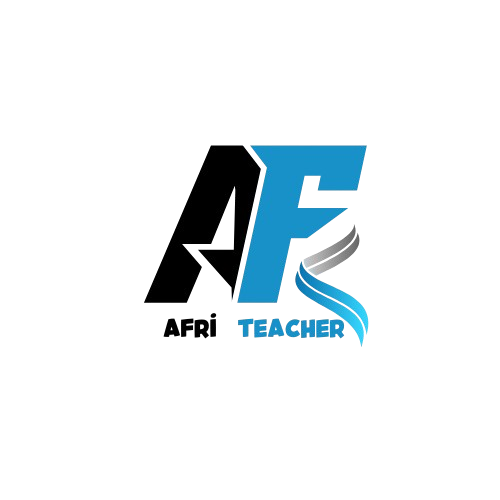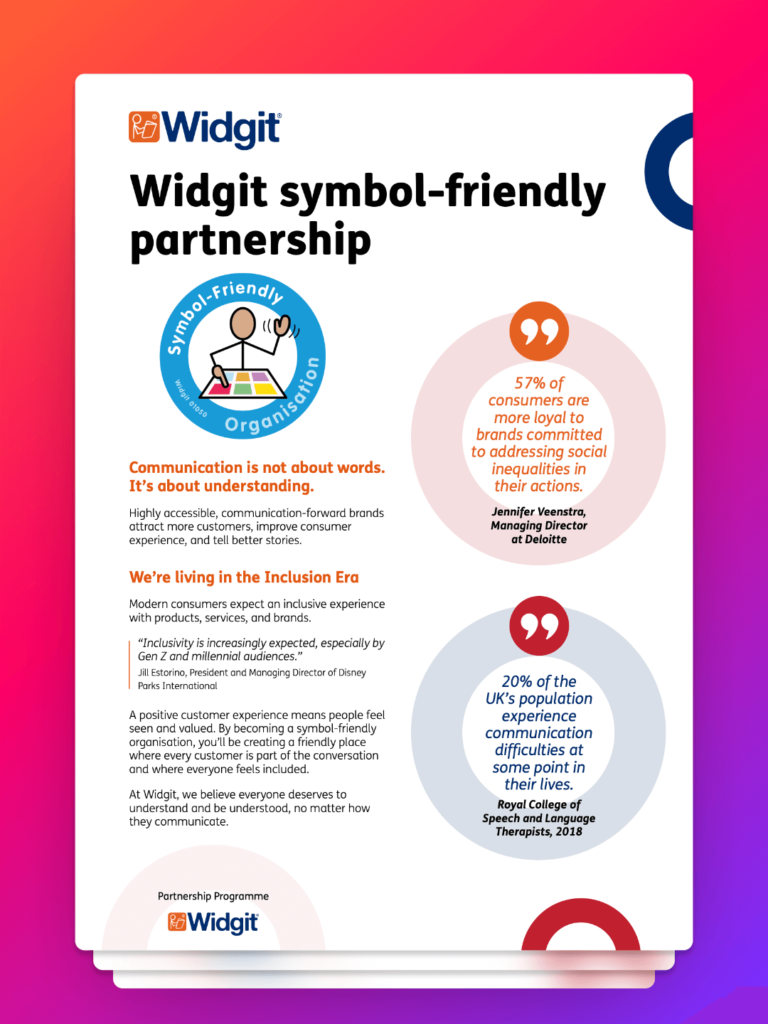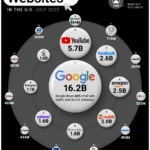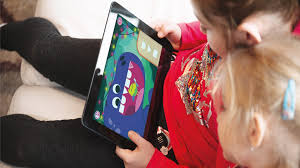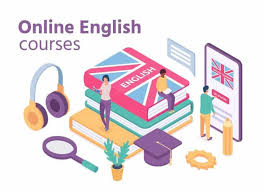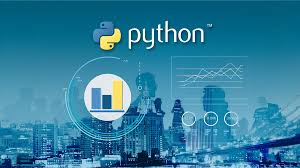In today’s interconnected world, where digital communication forms the bedrock of engagement, the quest for truly universal understanding has never been more critical. Businesses, educators, and organizations alike strive to break down barriers, ensuring their messages resonate across diverse cultures, languages, and cognitive abilities. This isn’t merely about good corporate citizenship; it’s a strategic imperative for global success, fostering inclusivity, and tapping into broader markets. Imagine a tool that transforms complex information into universally recognizable symbols, enabling seamless communication for everyone, everywhere. This is precisely the power of Widgit Online, an innovative platform that is fast becoming an indispensable asset for crafting truly accessible and impactful marketing campaigns.
The digital landscape is a vast tapestry of information, where billions of users from every corner of the globe interact daily. From online learning platforms offering myriad online courses to multinational corporations launching products, the challenge remains: how do we ensure our content is not only seen but genuinely understood by everyone? The answer often lies in visual communication, and Widgit Online stands at the forefront of this revolution. It’s a game-changer for those committed to genuine inclusion, moving beyond superficial accessibility to create content that speaks volumes without uttering a single word, or, more accurately, by supplementing words with powerful visual cues.
The Global Imperative for Accessible Communication
The world is undeniably flat, or at least, flatter than ever before. Thanks to the internet, a small business in Sydney can sell its products to customers in Berlin, while an online learning hub based in the UK can offer free online courses to students in South America. This global interconnectedness, while opening unprecedented opportunities, also presents a complex array of communication challenges. Linguistic diversity is just one facet; cognitive differences, learning disabilities, literacy levels, and even cultural nuances all play a significant role in how effectively a message is received.
Consider the sheer scale: millions worldwide live with communication difficulties, including conditions like autism, learning disabilities, or even temporary language barriers. Traditional text-heavy content, even if translated, often fails to bridge these gaps effectively. A marketing campaign reliant solely on written words might inadvertently exclude a significant portion of its potential audience, limiting its reach and impact. This isn’t just about ethical considerations; it’s about market share and genuine engagement. Studies consistently show that companies embracing accessibility initiatives not only enhance their brand reputation but also experience increased customer loyalty and expanded market access. As the digital sphere continues to grow, with more people engaging in online learning, professional development through resources like LinkedIn Learning, and daily interactions, the demand for truly inclusive content solutions only intensifies. The concept of blended learning also highlights the need for materials that are adaptable to various learning styles and environments, making visual supports even more critical.
The call for universal design is not a new one, but its urgency has escalated with the pervasive nature of digital communication. Whether it’s creating user manuals for a global product, developing engaging online education learning materials, or crafting compelling social media posts, the question must always be: “Is this accessible to everyone?” This is where the strategic power of symbols, and platforms like Widgit Online, comes into sharp focus. They offer a tangible, effective pathway to make marketing not just global, but genuinely universal.
The Unspoken Language: Why Visuals Resonate Universally
Before diving into the specifics of Widgit Online, it’s crucial to understand the fundamental power of visual communication. Symbols transcend linguistic boundaries, often communicating meaning faster and more intuitively than text. Think of road signs: a universally recognized symbol for a stop or a yield sign bypasses the need for multiple language translations, conveying immediate meaning to drivers regardless of their native tongue. This principle, when applied to marketing and educational content, unlocks enormous potential.
Human cognition is inherently visual. Our brains process images significantly faster than text. From ancient cave paintings to modern emojis, symbols have always been a foundational element of human communication. They simplify complex ideas, reduce cognitive load, and can evoke emotions more directly. For individuals with reading difficulties, learning disabilities, or those new to a language (e.g., someone engaged in language learning online or English learning online), symbols provide essential scaffolding, making information comprehensible and actionable.
Moreover, in a world saturated with digital content, visual appeal is paramount. Engaging graphics, compelling imagery, and clear symbols cut through the noise, capturing attention in a way that dense paragraphs often cannot. This is particularly relevant for diverse audiences, including young learners engaged in online learning games for 5 year olds, or adults who might prefer visual aids for subjects like Maths online or even complex topics such as learning Python or what is machine learning. The inclusion of symbols can make an immediate positive impact on user experience, enhancing engagement and retention across all demographics.
The impact of visuals is not limited to aiding comprehension; it also significantly contributes to memory retention. Information presented visually is more likely to be remembered and recalled accurately. This is a powerful advantage for marketing campaigns aiming for lasting brand recognition, or for online learning programs striving for effective knowledge transfer. When you combine the cognitive advantages with the global nature of digital interactions, the case for integrating symbols into your communication strategy becomes irrefutable.
Widgit Online: Your Gateway to Universal Understanding
Enter Widgit Online, a groundbreaking platform that empowers individuals and organizations to create symbol-supported content with remarkable ease and effectiveness. More than just a symbol library, it’s a comprehensive tool designed to enhance accessibility, clarity, and inclusivity across all forms of communication. For anyone involved in content creation, marketing, or online education learning, Widgit Online offers a robust solution to a pervasive challenge.
At its core, Widgit Online provides access to the extensive Widgit Symbols library, a collection of over 20,000 clear, consistent, and culturally sensitive symbols. These symbols are meticulously designed to represent a vast vocabulary, from everyday objects and actions to abstract concepts and emotions. But its utility extends far beyond a simple image bank.
Core Features and Benefits Revolutionizing Content Creation
Widgit Online isn’t just about having symbols; it’s about the intelligent application of those symbols to transform text into highly accessible content.
- Intuitive Symbolization: The platform automatically adds symbols to text as you type, or you can paste existing text for instant symbolization. This real-time support dramatically speeds up content creation, making it a viable solution even for fast-paced marketing teams or busy educators building online courses Australia.
- Extensive and Consistent Symbol Library: With over 20,000 symbols, the library covers an incredibly wide range of concepts. Crucially, the symbols maintain a consistent style, which is vital for reducing cognitive load and ensuring rapid comprehension, especially for users relying heavily on visual cues. This consistency ensures that once a user understands the Widgit style, they can interpret new symbols more easily.
- Customization and Personalization: Users can easily choose alternative symbols if the automatic suggestion isn’t quite right, or even upload their own images to create custom symbols. This flexibility is invaluable for branding, specific subject matter (e.g., unique jargon in CPA online learning or Python learning online), or tailoring content to very specific audiences. You can also customize symbol size, placement, and color to match your aesthetic and accessibility requirements.
- Multilingual Support: This is where Widgit Online truly shines for global campaigns. It supports symbolization in over 100 languages. This means you can create symbol-supported content in English, Spanish (perfect for learning Spanish online materials), French, German, and many more, making it an unparalleled tool for reaching diverse international audiences. Imagine translating a marketing message and then automatically adding symbols, ensuring that even if the translated text has subtle nuances, the core message remains universally clear. This feature alone makes it a powerful complement to tools like Google Translate, adding a layer of visual clarity that text-only translations often lack.
- Ready-Made Templates and Resources: Widgit Online offers a variety of templates for creating flashcards, worksheets, schedules, social stories, and marketing materials. This dramatically reduces the time and effort required to produce professional-looking, symbol-supported content. For institutions creating online learning programs or K-12 materials (e.g., those using IXL Learning or Scholastic Learning Zone), these templates can be a huge time-saver.
- Accessibility Compliance: By simplifying language and adding visual support, Widgit Online helps organizations meet various accessibility guidelines and standards, demonstrating a commitment to inclusion. This proactive approach can enhance brand reputation and open doors to new markets.
Bridging Language Barriers with Visuals: A Global Advantage
In an era where language learning online is booming, and platforms like Duolingo or Memrise are household names, the need for intuitive communication tools is evident. While text-based translation services like Arabic to English translation online or Urdu to English translation online are invaluable, they often fall short in conveying cultural context, tone, or simplifying complex ideas for non-native speakers or individuals with low literacy. This is where Widgit symbols step in, acting as a universal visual lexicon.
For global marketing campaigns, this means:
- Enhanced Message Clarity: Even if a translation is technically accurate, cultural idioms or complex sentence structures can confuse. Symbols provide a clear, unambiguous visual anchor for the message, ensuring core meaning is preserved across all linguistic versions.
- Reduced Cognitive Load for Non-Native Speakers: When learning a new language, whether through free online learning resources or structured online learning courses, processing new vocabulary alongside new grammatical structures can be exhausting. Symbol support lightens this load, allowing learners to grasp concepts more quickly and confidently.
- Instant Recognition in Multilingual Content: Imagine a product label, a safety instruction, or a promotional banner that features text in multiple languages. Adding Widgit symbols ensures that the most critical information is immediately comprehensible to everyone, regardless of which language they read first, or if they read at all.
This capability is not just theoretical; it’s a practical, daily solution for businesses and educators aiming for true global reach. From online learning NSW initiatives to learning online QLD Health directives, and from CPA Australia resources to college for adult learning materials, the ability to create consistently symbol-supported content in multiple languages is a significant competitive advantage.
Strategic Applications in Global Marketing Campaigns
The application of Widgit Online extends far beyond traditional educational settings. For global marketing, its potential is immense, offering innovative ways to engage diverse audiences and enhance brand perception.
Enhancing Digital Accessibility and Inclusivity
In the digital age, accessibility is no longer an optional extra; it’s a fundamental requirement. Websites, social media content, email newsletters, and online learning platforms must be designed with everyone in mind. Widgit Online directly contributes to this by:
- Website Content: Integrating symbols into key website sections, navigation menus, and call-to-action buttons can make your site easier to navigate and understand for users with cognitive disabilities, low literacy, or those using assistive technologies. This broadens your potential audience significantly.
- Social Media Campaigns: In the fast-paced world of social media, visuals reign supreme. Symbol-supported posts can cut through the noise, conveying messages quickly and effectively to a broader, more diverse audience, boosting engagement and shareability.
- Email Marketing: Simplifying the language and adding symbols to email newsletters can improve open rates and click-through rates, especially for complex promotions or information. This ensures your message isn’t lost in translation or overlooked due to cognitive effort.
- **Interactive Content and Online Learning Games: For marketers creating interactive quizzes, explainer videos, or even online learning games for 5 year olds, integrating symbols can make the content more engaging and comprehensible for a wider range of users, improving the overall user experience. This also applies to professional development games, making complex business scenarios or learning license test online simulations more accessible.
- User Manuals and Product Guides: For products sold globally, clear, universally understood instructions are paramount. Symbol-supported manuals can drastically reduce support inquiries and improve customer satisfaction, especially for complex items or those requiring safety precautions.
By proactively addressing accessibility, businesses not only comply with evolving regulations but also demonstrate a commitment to social responsibility, enhancing their brand image and fostering deeper connections with customers. This ethos is increasingly important for consumers who value ethical brands.
Simplifying Complex Information: From Finance to Tech
Marketing often involves communicating complex ideas, whether it’s the intricacies of a new financial product, the technical specifications of software, or the benefits of a cutting-edge service. For many, this complexity can be a barrier to understanding. Widgit Online offers a powerful solution.
- Financial Services: Explaining investment options, insurance policies, or retirement plans can be daunting. Symbol-supported brochures or online learning modules can demystify these topics, making financial literacy accessible to a wider demographic. Consider how CPA online learning or CPA Australia might use this for their educational materials to simplify complex accounting principles.
- Technology and Software: Marketing new software features or explaining technical support processes often requires dense jargon. Using symbols alongside text can simplify these explanations, making product adoption easier and reducing frustration for users. This could be particularly useful for materials related to learning Python, online machine learning, or explaining what is machine learning concepts to a broader audience.
- Health Information: Communicating public health messages, product warnings, or healthcare services benefits immensely from clear, symbolic representation. This is vital for ensuring critical information reaches everyone, regardless of language or literacy level. Initiatives like learning online QLD Health could significantly benefit from such visual aids.
- Educational Content: Beyond direct marketing, many companies offer educational content as part of their strategy. For platforms like Coursera, edX, or internal online learning systems, integrating Widgit symbols can transform online education learning materials, making them more effective for a diverse student body, including those with special educational needs. Even resources from organizations like activate learning online or universities using platforms like flinders learning online could leverage this for increased accessibility.
By simplifying complex information, businesses can expand their market reach, build trust, and empower their audience with knowledge, fostering a deeper, more meaningful engagement that goes beyond mere transaction.
Case Studies and Real-World Impact (Hypothetical Examples for Illustration)
While specific commercial data for Widgit Online in global marketing campaigns can be proprietary, the general impact of accessible communication is well-documented. Here are illustrative examples of how businesses and organizations leverage symbolic communication:
- The International Food Chain’s Menu Expansion: A global fast-food chain, aiming to expand its vegetarian and allergen-free options, used symbol-supported menus across its European franchises. By displaying Widgit symbols for “vegetarian,” “gluten-free,” or “contains nuts” alongside text in local languages, they not only sped up order processing but also significantly boosted customer confidence among those with dietary restrictions or language barriers. The result was a 15% increase in sales of these specific items and overwhelmingly positive customer feedback, demonstrating the direct business value of clear, accessible communication in a competitive market.
- A Tech Company’s Onboarding Program: A leading software company, known for its online learning platforms and professional development resources like O’Reilly online learning, developed a new employee onboarding module for its globally distributed workforce. Recognizing that some new hires were non-native English speakers or preferred visual learning, they integrated Widgit symbols into their training materials. This included symbols for task lists, organizational charts, and even complex software commands. Feedback indicated that new employees completed training modules 20% faster and reported higher comprehension levels, proving that visual support enhances online education learning even for tech-savvy professionals.
- A Public Transport Authority’s Information System: A major city’s public transport authority redesigned its station signage and online learning tutorials for ticket machines using Widgit symbols. Faced with a highly diverse tourist population and a significant elderly demographic, they realized text-only instructions were insufficient. The symbol-supported signage, which conveyed concepts like “destination,” “ticket purchase,” or “platform change,” drastically reduced confusion, decreased incidents of incorrect fares, and led to a noticeable improvement in user satisfaction survey results. This live, daily information impact shows how accessibility tools improve public services.
These examples underscore a crucial point: accessible marketing isn’t about charity; it’s about smart business. It removes barriers, broadens appeal, and ultimately drives engagement and revenue.
Integrating Widgit Online into Your Workflow
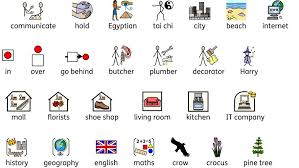
Implementing Widgit Online effectively requires a strategic approach. It’s not just a tool; it’s a methodology for inclusive communication.
For Content Creators and Marketers
- Start Small, Scale Up: Begin by applying symbol support to critical marketing materials like website calls-to-action, key product features, or social media posts. Measure the impact (e.g., engagement rates, conversions) before expanding.
- Brand Consistency: While Widgit symbols are standardized, ensure they align with your brand’s overall tone and visual identity. Use custom symbols for brand-specific terminology if necessary.
- A/B Testing: Experiment with different levels of symbolization to see what resonates best with your target audience. Sometimes, a subtle addition is more effective than overwhelming content with visuals.
- Training: Provide your marketing team with free online learning resources or dedicated online learning courses on using Widgit Online and the principles of accessible communication. Understanding why and how to use symbols effectively is key.
For Educators and Online Learning Providers
- Curriculum Development: Integrate Widgit symbols into lesson plans, worksheets, presentations, and digital assignments. This creates a more inclusive learning environment across all subjects, from Maths online to language learning online.
- Platform Integration: For online learning platforms like Coursera, edX, or institutional systems such as Solent Online Learning or UNIMIB Segreterie Online, explore ways to integrate symbol support directly into content creation workflows.
- Differentiated Instruction: Widgit Online is a powerful tool for differentiating instruction, allowing educators to create materials that cater to various learning styles and needs, including those using doodle learning or IXL. This is particularly valuable in blended learning environments where students learn in diverse ways.
- Parent/Guardian Communication: Create symbol-supported letters, newsletters, or online learning resources for parents to ensure clear communication about student progress and school events.
- Professional Development: Encourage staff to undertake online learning programs on creating accessible content, potentially leveraging resources like LinkedIn Learning or specialized courses provided by Widgit.
For Businesses and Organizations
- Internal Communications: Use symbol-supported materials for internal memos, safety instructions, HR policies, and training modules to ensure all employees, regardless of background or ability, understand critical information. This enhances workplace safety and efficiency.
- Customer Service: Develop symbol-supported FAQs, chatbot responses, or help guides to make customer support more accessible and efficient, reducing the need for lengthy explanations.
- Public Information Campaigns: For government bodies or NGOs, Widgit symbols can dramatically increase the reach and impact of public information campaigns on health, safety, or community services.
- Compliance: Proactively use Widgit Online to meet and exceed accessibility standards, protecting your organization from potential legal challenges and demonstrating a commitment to ethical practices.
By thoughtfully integrating Widgit Online, organizations can move beyond mere compliance to genuine inclusivity, creating content that is not only understood but also appreciated by a truly global and diverse audience.
The Future of Accessible Communication: Trends and Technologies
The landscape of accessible communication is constantly evolving, driven by technological advancements and a growing understanding of diverse human needs. Widgit Online is poised to play an even more significant role in this future, especially as it intersects with emerging technologies.
AI and Machine Learning in Symbol Generation
The fields of what is machine learning and deep learning are rapidly advancing, offering exciting possibilities for the future of symbolic communication. Imagine AI-powered tools that can:
- Contextual Symbolization: Machine learning algorithms could analyze the context and nuance of a sentence to suggest the most appropriate symbol, even for abstract concepts, with greater accuracy than current rule-based systems. This would make content creation even faster and more precise.
- Personalized Symbol Sets: AI could learn an individual user’s preferred symbols or cognitive needs, automatically adapting symbol choices for personalized communication experiences.
- Automated Translation and Symbolization: Seamless integration between advanced language translation (like Google Translate with its continuous improvements) and symbol generation, potentially allowing for real-time creation of visually supported multilingual content. This could revolutionize how organizations communicate globally, making Arabic to English translation online or Urdu to English translation online not just textual, but visually enriched.
- AI Courses Online Free and specialized AI courses online are already training the next generation of developers to build these very tools, indicating a bright future for intelligent accessibility solutions.
While these capabilities are still maturing, the integration of AI courses online free and online machine learning principles into platforms like Widgit Online holds immense promise for making symbol-supported communication even more intelligent, dynamic, and personalized.
The Evolving Landscape of Online Learning and Accessibility
Online learning has moved from a niche offering to a mainstream educational paradigm. The COVID-19 pandemic accelerated its adoption, and platforms from Udemy to Codecademy (for learning Python) and institutional solutions like RWTH Online or Tum Online continue to innovate. This growth inherently demands greater accessibility.
- Universal Design for Learning (UDL): The principles of UDL – providing multiple means of representation, action & expression, and engagement – are perfectly complemented by symbol-supported content. Widgit Online directly facilitates the “multiple means of representation” principle, ensuring that information is presented in diverse formats to meet various learner needs.
- Adaptive Learning Systems: Future online learning systems will increasingly adapt to individual learners. Integrating symbolization dynamically based on a learner’s profile (e.g., literacy level, language proficiency, learning disability) could create highly personalized and effective learning pathways.
- Gamification and Interactive Learning: The rise of online games and learning games online for educational purposes, exemplified by tools like Kahoot!, presents an opportunity for symbol integration to make these interactive experiences more inclusive and effective for all participants, including those engaged in online learning for kids or special education.
- Professional Development: As more professionals rely on online learning platforms for continuous development (e.g., CPA online learning, Red Cross learning center, Baycare online learning center), accessible materials become crucial. Symbol support can simplify complex professional jargon and concepts, making advanced training more approachable. Even specific professional needs like the learning license test online could benefit from visual clarification of rules and scenarios.
The “learning curve” for new technologies or complex subjects can be steep; accessible design, championed by tools like Widgit Online, works to flatten this curve for a broader audience.
Overcoming Challenges and Best Practices
While Widgit Online offers powerful solutions, effective implementation requires careful consideration and adherence to best practices to avoid common pitfalls.
- Avoid Over-Symbolization: Not every single word needs a symbol. Too many symbols can clutter content and become visually overwhelming, defeating the purpose of clarity. Focus on key nouns, verbs, and concepts, especially those that might be ambiguous or challenging.
- Context is King: Symbols derive their meaning from context. Ensure the symbols you choose accurately reflect the intended meaning within your specific content. The customization features of Widgit Online are crucial here.
- User Testing: Whenever possible, test your symbol-supported content with members of your target audience, particularly those with communication difficulties. Their feedback is invaluable for refining your approach and ensuring genuine accessibility.
- Consistency Across Platforms: If you’re using symbols across your website, social media, and online learning materials, strive for consistency in symbol choice and presentation. This builds familiarity and reduces cognitive load for your users.
- Training and Guidelines: Establish clear internal guidelines for using Widgit Online and communicating with symbols. Provide training to all content creators and marketers to ensure a unified and effective approach. Many online learning platforms offer courses on accessibility design that can complement this.
- Combine with Other Accessibility Features: Symbols are one component of a holistic accessibility strategy. Ensure your content also adheres to other accessibility best practices, such as clear headings, alt text for images, keyboard navigation, and proper color contrast.
- Keep Content Concise: Even with symbols, clarity benefits from conciseness. Aim for simple, direct language in your text to maximize the impact of the visual support. This applies to everything from a complex research summary on deep learning to simple instructions for online learning games.
By adhering to these best practices, organizations can maximize the benefits of Widgit Online and ensure their accessible marketing campaigns are truly impactful and inclusive.
Conclusion: Embracing a Symbol-Rich Future for Global Engagement
In a world that thrives on connection and understanding, the ability to communicate universally is not merely an advantage; it is an essential ingredient for success. Widgit Online emerges as a vital tool in this endeavor, empowering businesses, educators, and organizations to transcend linguistic and cognitive barriers, fostering true global accessibility and inclusion.
From making online learning courses accessible to a broader student body, to simplifying complex financial products for diverse markets, and from enhancing public health campaigns to streamlining internal communications, the strategic application of symbol-supported content offers profound benefits. It’s about building bridges, empowering individuals, and unlocking new markets. As the digital realm continues its rapid expansion, fueled by advancements in AI courses online free and widespread online education learning, the demand for such inclusive communication tools will only intensify.
By embracing the power of visual communication through platforms like Widgit Online, you’re not just creating content; you’re cultivating understanding. You’re not just running a campaign; you’re building a community. You’re not just offering a product or service; you’re extending an invitation to everyone, everywhere, to participate, learn, and engage. The future of global marketing and communication is accessible, symbol-rich, and universally understood. And with Widgit Online, that future is now.
Sources & Further Reading:
- Widgit Official Website: Explore the Widgit Symbols library, software, and resources.
- The Power of Visual Communication in Education:
- Understanding Universal Design for Learning (UDL):
- Global Accessibility Standards and Guidelines (e.g., WCAG):
- The Business Case for Digital Accessibility:
